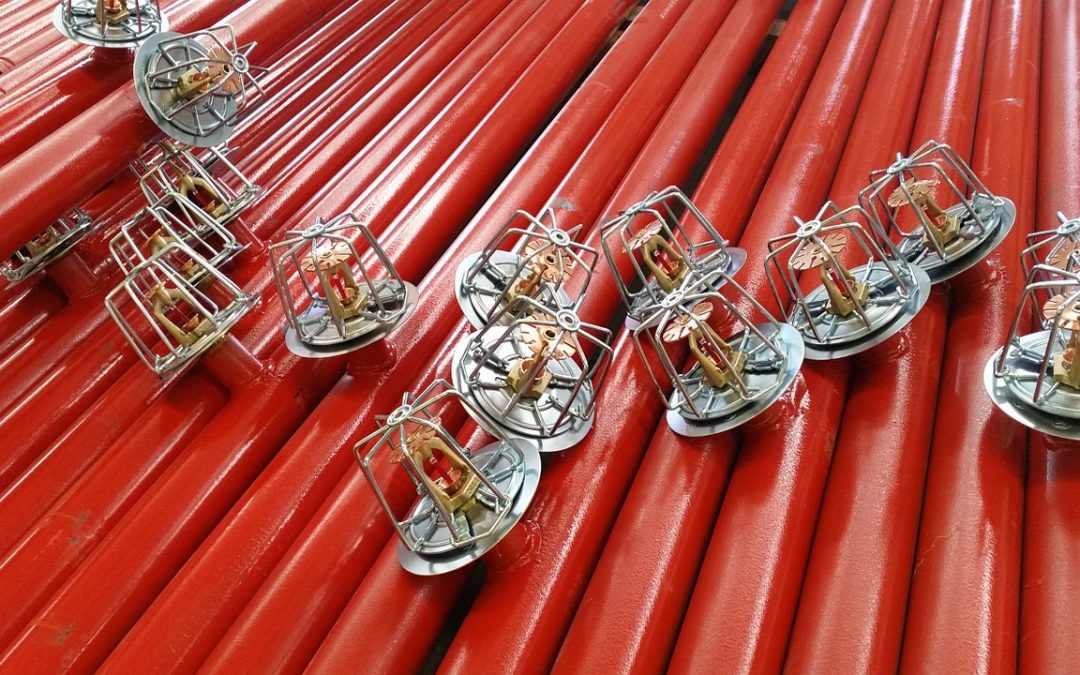Any commercial building requires fire protection. For most commercial applications, a fire sprinkler system is the fire protection option that works best to protect your property and your people from a potential fire hazard. But, every commercial building has different fire protection requirements, which means different types of fire sprinkler systems are necessary. If you’re not sure which fire sprinkler system is right for your commercial building, here are the three most common types of fire sprinklers, how they work, and what applications they’re most useful for.
Wet Fire Sprinkler System
A wet fire sprinkler system is one of the most common options on the market. In a wet fire sprinkler system, water is always in the line. When a fire is present, the heat causes the core of a sprinkler head to burst. This discharges water from the affected sprinkler head. In a wet fire sprinkler system, not all sprinkler heads are activated at once — only those that are exposed to fire will discharge.
This helps to reduce damage in the event of a false alarm, and contain any damage to only the areas of a building where a fire hazard is present. A wet fire sprinkler system’s relatively simple actuation is what makes it one of the most popular options on the market today.
Dry Fire Sprinkler System
A dry fire sprinkler system is filled with pressurized air, rather than water. These sprinklers are designed only to release water to the pipes when the sprinkler heads are activated. Though this does add to the fire response time, this is a necessary feature for unheated buildings and properties, like warehouses in the north, outdoor parking garages, and other applications where temperatures are low and pipes are at a high risk of freezing.
These fire sprinkler systems do often include a fast opening tool that allows pressurized air to release quickly and increase the flow of water. Dry fire sprinkler systems are used in applications where the repercussions of frozen and burst pipes are much greater than the danger associated with a fire hazard.
Preaction Fire Sprinkler System
Preaction fire sprinkler systems combine the flexibility of a wet system with the complexity of a dry system to protect high-value goods in buildings like museums and libraries. Like a dry system, preaction fire sprinkler systems are filled with air. Unlike dry systems, however, preaction systems are actuated by a preceding fire detection event — the activation of a smoke or heat detector. This extra detection step helps to reduce the damage associated with water spouting in the case of a mechanical failure of a false alarm.
There are two main types of preaction fire sprinkler systems:
Single Interlock
Single interlock preaction systems work nearly the same as a dry fire sprinkler system, with the exception of the preceding fire detection event. Where a dry system will only actuate once heat or fire is detected, single interlock systems respond a bit more quickly, by responding to the activation of a smoke detector or fire alarm. This decreases the time delay associated with dry fire sprinkler systems.
Double Interlock
Double interlock preaction systems require a preceding fire detection event just like a single interlock system. What sets them apart is that they also require the operation of an automatic sprinkler system. Both systems have to be activated — the sprinklers and the smoke detector — before the double interlock preaction fire sprinkler system will release water into the system.
Double interlock systems are best for sensitive environments where activation of the sprinkler system can cause significant damage. If there’s some sort of mechanical failure or false alarm — a sprinkler head is damaged, a pipe breaks, a natural disaster occurs — the system will not actuate, helping to keep the valuable property within the building safe.
Not sure which fire sprinkler system is right for you? No problem. Vanguard’s team of experienced technicians can identify the fire suppression system that’s best for your facility and the fire hazards present. From design and installation to maintenance, inspections, and testing, we’re your one-stop-shop for comprehensive fire protection. Give us a call or contact us online to schedule an appointment today.


